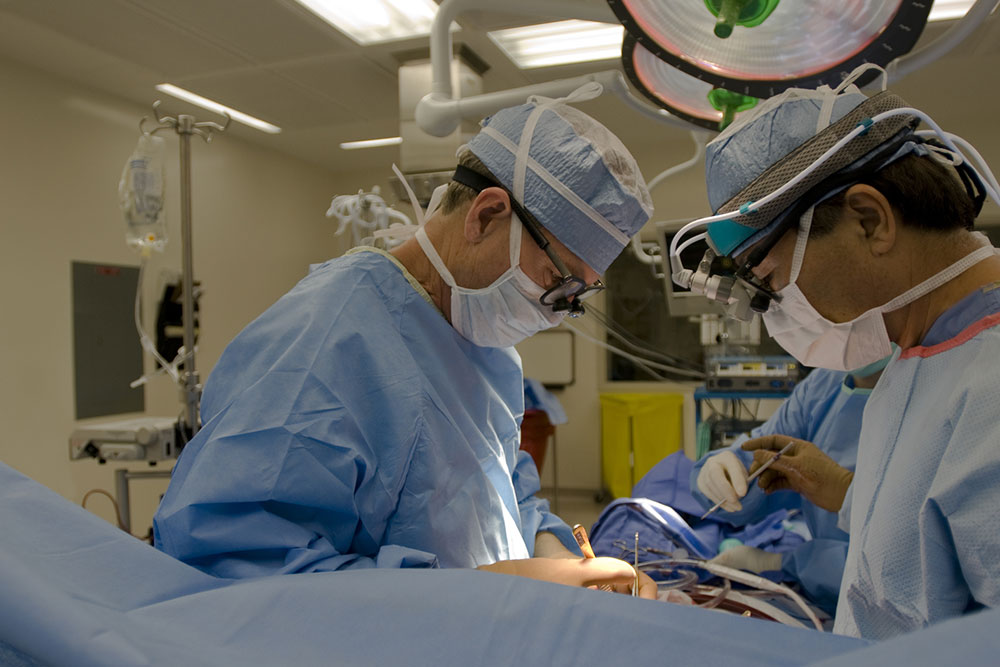The Complete Guide to Sleeve Gastrectomy: Procedure, Benefits, Costs, and Post-Operative Care
Sleeve gastrectomy is a minimally invasive surgical procedure for weight loss that involves removing part of the stomach to restrict food intake and hormonal hunger signals. This comprehensive guide covers candidacy criteria, surgical techniques, benefits, costs, and essential post-op care, helping individuals make informed decisions about their obesity treatment options. The procedure offers significant health improvements and a quicker recovery, making it a popular choice among bariatric options for suitable candidates seeking sustainable weight management and health benefits.

An In-Depth Look at Sleeve Gastrectomy: Procedures, Benefits, and Cost Analysis
Sleeve gastrectomy, more commonly known as gastric sleeve surgery, is a highly effective surgical intervention designed to promote significant weight loss and improve obesity-related health conditions. This procedure involves removing a large portion of the stomach to create a smaller, sleeve-shaped stomach, which limits food intake and influences hormonal signals related to hunger and satiety. Though generally considered safe with experienced surgeons, it requires thorough medical evaluation, preoperative preparation, and post-operative care to ensure optimal outcomes. This comprehensive guide explores all facets of sleeve gastrectomy—from candidacy requirements and surgical techniques to expected benefits, costs, and essential aftercare—aimed at helping individuals make informed decisions about their health journey.
Who is an Ideal Candidate for Sleeve Gastrectomy?
Understanding candidacy is crucial before considering sleeve gastrectomy. Typically, eligible candidates are individuals with a body mass index (BMI) of 40 or higher, which categorizes them as severely obese. BMI is calculated by dividing one’s weight in kilograms by the square of height in meters. Patients with lower BMI, such as between 35 and 39.9, might still qualify if they suffer from serious obesity-related health issues like type 2 diabetes, hypertension, sleep apnea, or cardiovascular disease. Additionally, those who have tried multiple weight loss methods—including diets, exercise, or medications—without sustainable success may be good candidates. It’s essential for prospective patients to undergo comprehensive evaluations from a multi-disciplinary team comprising surgeons, nutritionists, and mental health professionals to assess psychological readiness, medical stability, and lifestyle factors. This holistic approach ensures that individuals are well-prepared for the significant lifestyle changes that follow.
Pre-Operative Preparation and Surgical Procedures
Once a patient is deemed suitable for surgery, scheduling the operation involves detailed preparation. Typically, about two weeks before the scheduled surgery date, patients transition to a liquid or pureed diet to minimize the size of the liver and reduce surgical risks. A 12-hour fast before surgery ensures stomach emptiness, reducing the risk of aspiration during anesthesia. On the day of the operation, the patient is administered anesthesia and taken to an operating room where a minimally invasive laparoscopic technique is utilized. Using small abdominal incisions, the surgeon inserts a laparoscope—a thin tube with a camera—and specialized surgical instruments to perform the procedure.
The primary step involves creating several small incisions on the abdomen, which allows insertion of the laparoscope and surgical tools, minimizing trauma and promoting faster healing.
The surgeon carefully detaches a large portion of the stomach’s outer wall, approximately 80%, and reshapes the remaining stomach into a narrow, tube-like structure resembling a banana.
This new, smaller stomach significantly reduces the volume of food intake and impacts gut hormones responsible for hunger regulation.
The entire procedure typically lasts between 1 to 1.5 hours, followed by monitoring in a recovery room and a brief hospital stay of 1-2 days.
The precision of the laparoscopic approach not only minimizes scarring but also reduces recovery time and postoperative discomfort, making it a preferred method among surgeons and patients alike.
Expected Outcomes of Sleeve Gastrectomy
The primary goal of sleeve gastrectomy is to facilitate early satiety, which helps patients naturally reduce calorie consumption and curb unhealthy food cravings. Beyond weight loss, the surgery has profound health benefits, including improvement or remission of comorbidities such as high blood pressure, type 2 diabetes, high cholesterol, fatty liver disease, joint pain, and cardiovascular issues. Because only the stomach is modified without rerouting intestines, the surgery carries a relatively low risk profile and tends to result in faster recovery compared to more invasive procedures like gastric bypass. Patients typically experience a significant reduction in hunger hormones, which supports sustained weight loss and metabolic improvements. These positive health effects can substantially enhance overall quality of life, physical stamina, and mental well-being over time.
Advantages of Sleeve Gastrectomy
Among its key advantages, sleeve gastrectomy is recognized for its simplicity and safety. The procedure’s minimally invasive nature allows for quicker recovery times—most patients return to light activities within a few days. Unlike surgical options involving the rerouting of intestines, it preserves normal digestive pathways, reducing the risk of long-term complications such as nutritional deficiencies. The procedure’s technical straightforwardness also means shorter anesthesia duration and less blood loss, further decreasing perioperative risks. Additionally, the hormonal effects contributing to appetite suppression can lead to more sustainable weight management. Patients often report minimal scars, reduced postoperative pain, and fewer hospital visits, making it a popular choice for those seeking effective weight loss solutions with fewer risks.
Cost Considerations and Insurance Coverage
The expense associated with sleeve gastrectomy varies based on geographic location, hospital facilities, surgeon expertise, and post-operative care needs. On average, the procedure costs around $19,000 in the United States, but prices can range from approximately $17,000 to $26,000, with some cases reaching up to $33,500 depending on complexity. The cost encompasses surgeon’s fees, anesthesia, hospital stay, preoperative assessments, and follow-up care. Many insurance plans provide coverage when the procedure is classified as medically necessary—particularly for patients with significant obesity-related health issues. Patients are advised to verify their insurance policies and seek pre-authorization to understand coverage limits and out-of-pocket expenses. Exploring financial assistance programs or payment plans offered by some clinics can also ease the financial burden for those seeking this life-changing surgery.
Post-Operative Care and Long-Term Lifestyle Modifications
Effective post-surgical care is essential for achieving lasting results. The initial phase involves transitioning from a liquid diet to soft foods, then gradually reintroducing small, balanced meals as tolerated. Regular follow-up appointments with healthcare providers are vital to monitor wound healing, nutritional status, and vitamin levels. Blood tests are routinely performed to check for deficiencies in iron, vitamin B12, calcium, and other micronutrients, as the altered stomach capacity can affect absorption. Patients must adhere to strict dietary guidelines, avoiding high-calorie, high-sugar, and high-fat foods to prevent stretching the stomach and compromising weight loss. Consuming dedicated vitamin and mineral supplements ensures nutritional adequacy, preventing deficiencies common after bariatric surgery. Lifestyle changes should also include adopting regular exercise routines, maintaining hydration, and fostering psychological resilience through support groups or counseling. These comprehensive measures optimize the long-term success of sleeve gastrectomy, helping individuals enjoy a healthier, more active life.
Initially, patients are encouraged to consume clear liquids, progressing to pureed foods and then small, frequent meals as advised by their medical team.
Avoiding foods high in calories, sugar, and fats is crucial in preventing stomach overexpansion and weight regain.
Consistent intake of prescribed vitamins and minerals, along with balanced meals, supports optimal health and prevents nutritional deficiencies.
In conclusion, consulting a specialized healthcare provider with experience in bariatric surgery remains fundamental. Utilize online search strategies such as “top-rated gastric sleeve surgeons near me” or “bariatric clinics in my area” to find reputable specialists. Reviewing patient testimonials, clinic accreditation, and insurance policies will facilitate making an informed choice tailored to personal health needs. Embracing a comprehensive post-operative plan and committing to lifestyle modifications are the keys to sustaining weight loss and enjoying improved health after sleeve gastrectomy.




